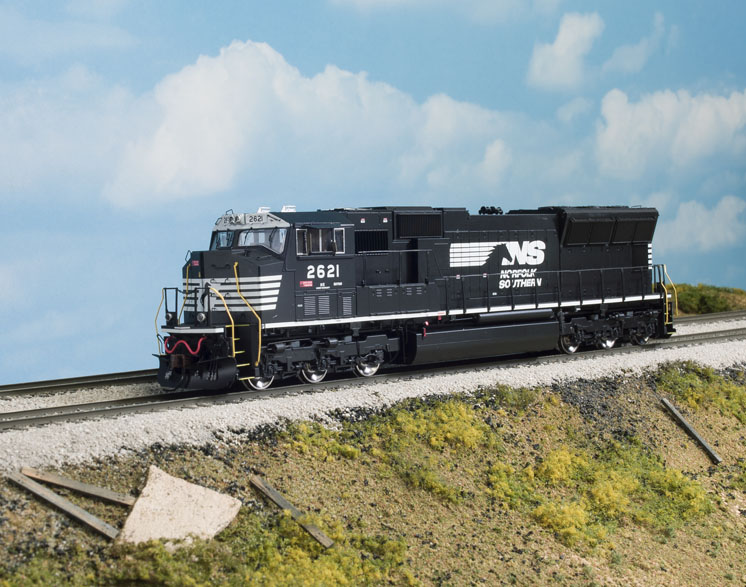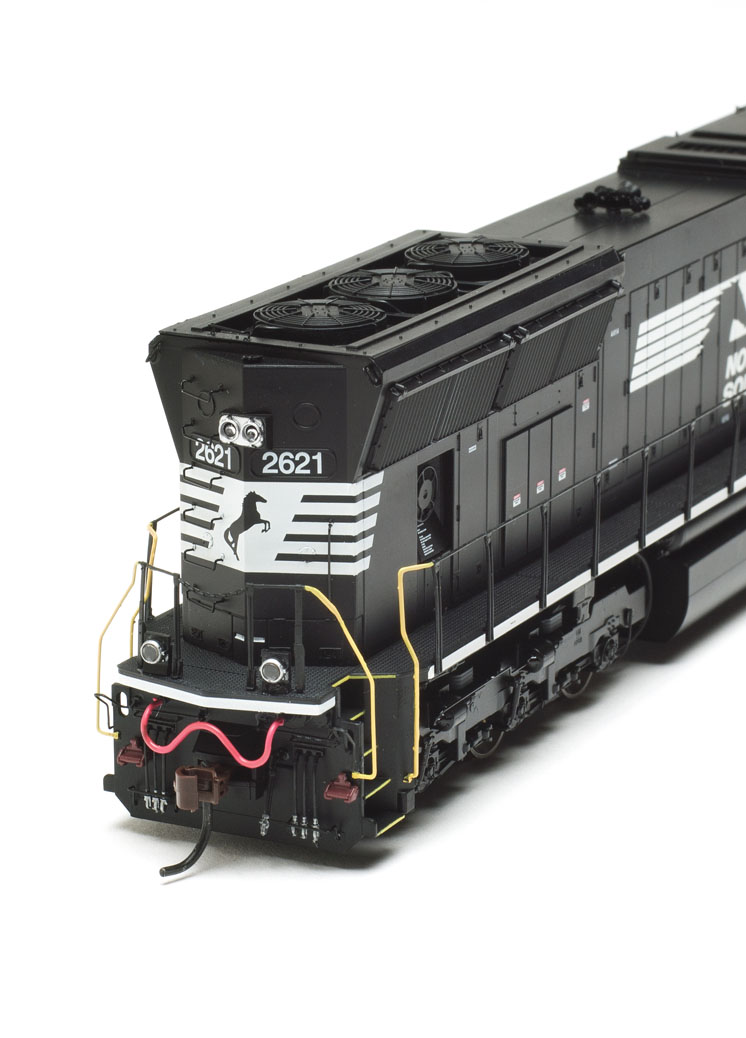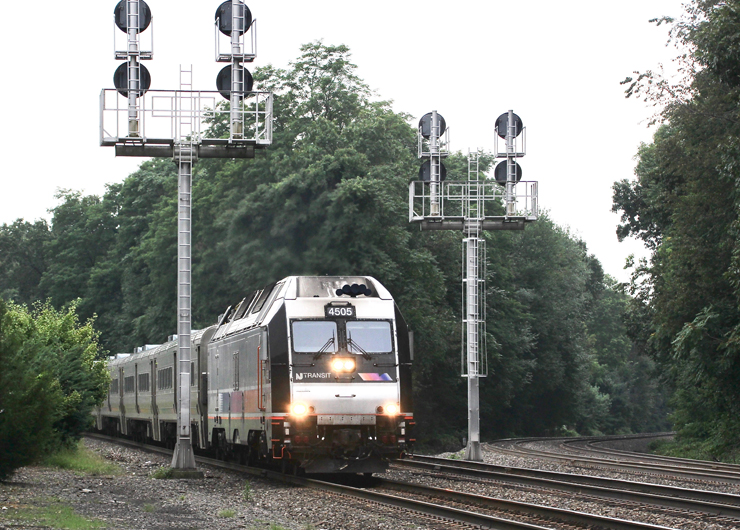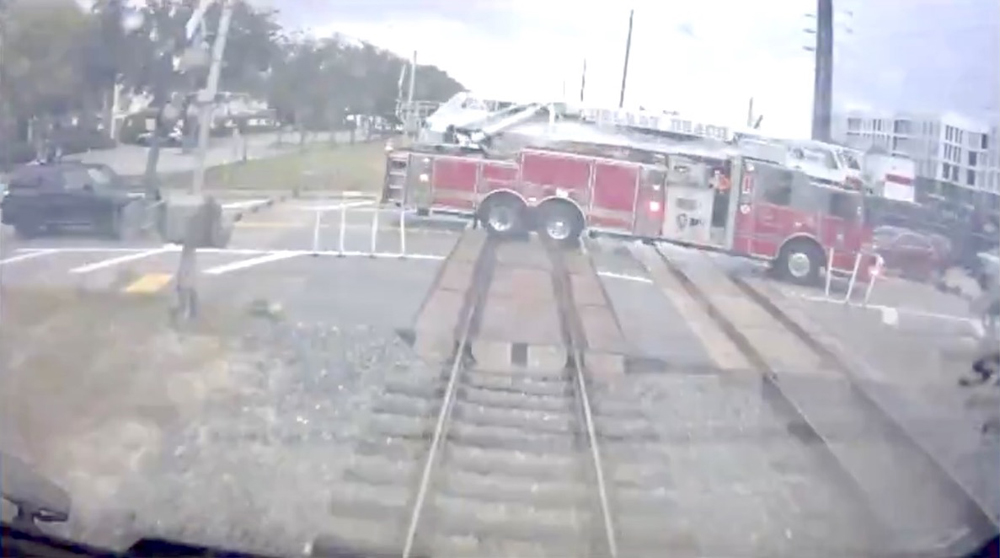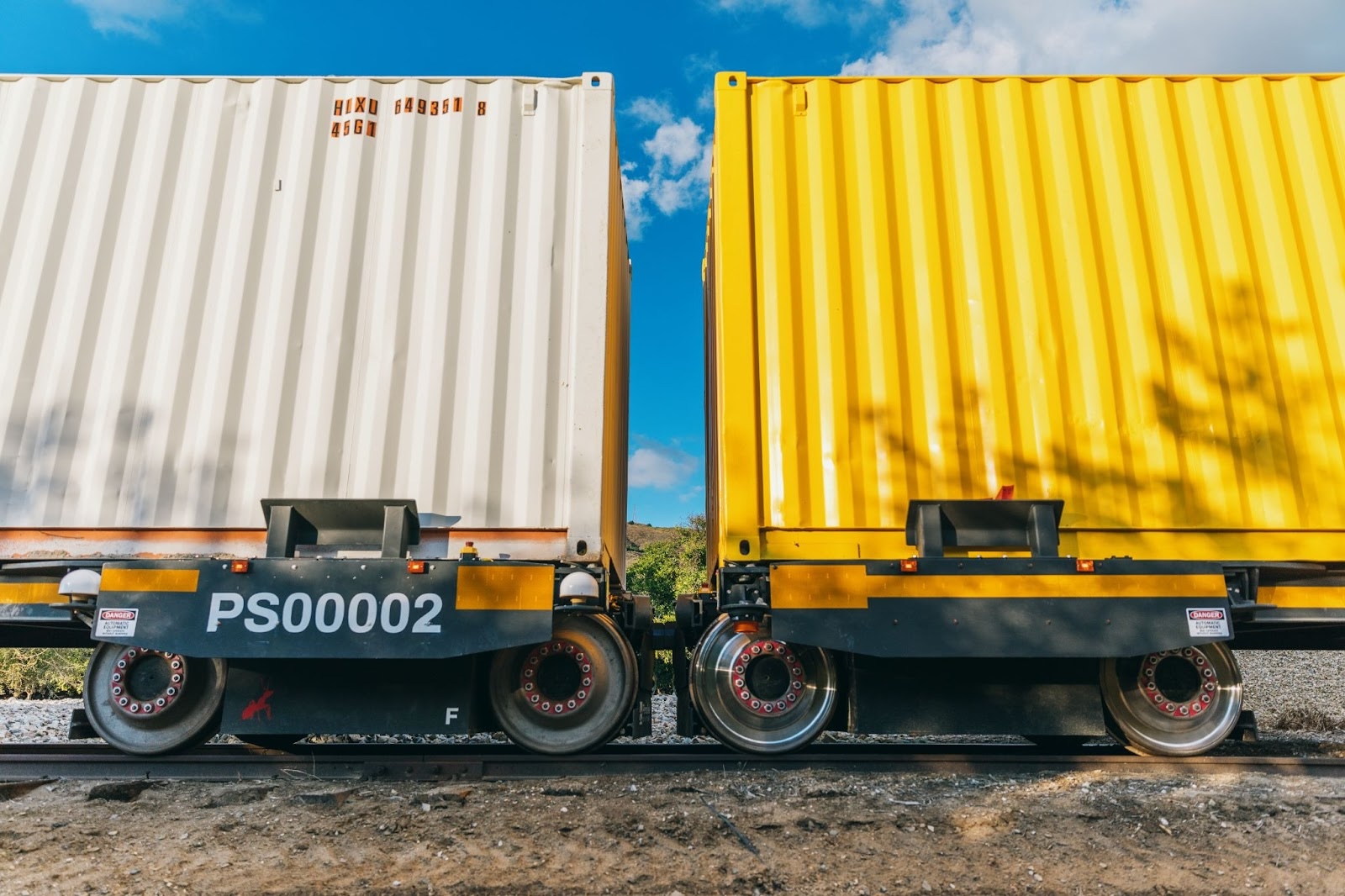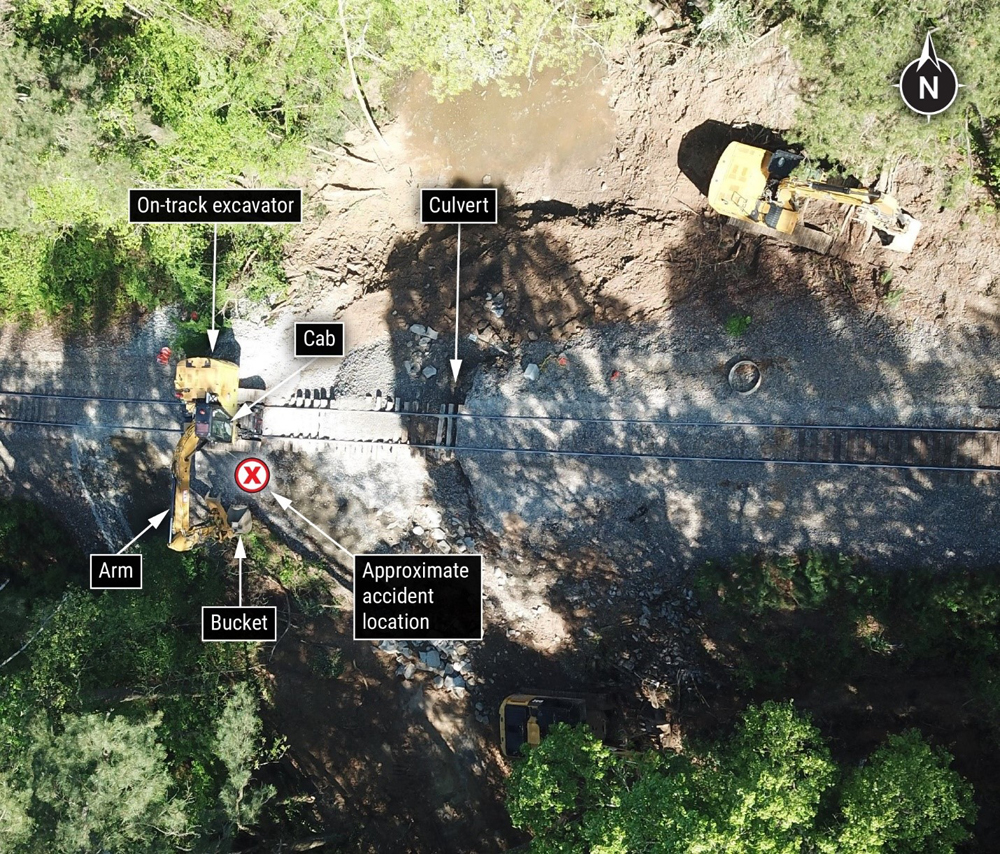Electro-Motive Division’s SD70M, one of the most numerous locomotives on North American rails today, is now offered in an HO scale model equipped with Digital Command Control and sound. This isn’t the first HO scale SD70M in Athearn’s Genesis line. Senior editor Jim Hediger reviewed a previous model in the November 2002 Model Railroader. However, this latest release features a newly tooled plastic shell on an Athearn Genesis mechanism.
The prototype. The “M” in the locomotive’s designation stands for “modernized,” referring to the wide-nose North American Comfort Cab that distinguishes it from earlier SD70s. However, the biggest change in this new version was the locomotive’s HTCR steerable radial trucks. Rather than just pivoting as a unit to follow curves, EMD’s new, patented trucks turned each axle individually to parallel the rail, reducing wheel wear and improving traction at least 30 percent. The SD70M was the first to use these high-adhesion trucks.
Though the engine was purchased by nearly a dozen domestic and foreign railroads, one order vaulted it into the ranks of the most popular locomotives ever built. In October 1999, Union Pacific placed the largest single-modellocomotive order in history, calling for 1,000 SD70Ms to be delivered over the next four years. Most SD70Ms are still on the rails today.
Inside, out. All the grab irons, lift rings, windshield wipers, cab sunshades, and the like are factory-installed. These etched-metal and wire details look great.
Also new is the flared radiator envelope characteristic of SD70Ms built after December 2001. Almost two-thirds of UP’s 1,000-unit order were shipped with these flared intakes, as were three-quarters of Norfolk Southern’s SD70Ms.
The major details on the shell, both molded in and separately applied, matched photos of a UP prototype published in the October 2003 Trains magazine. Our sample, a replica of Norfolk Southern no. 2621, bore railroad-specific details like roof-mounted antennas that matched NS prototype photos in the January 2003 issue of Diesel Era. The major dimensions matched those in a builder’s diagram I found online.
The paint job was impressive, with the white printing being smooth and opaque over the black body. There were only small voids where the herald’s white stripes crossed panel lines on the side of the hood. The numerous tiny warning stickers and labels on the hood doors were legible under magnification.
I followed the instructions in the owner’s manual to lift the shell from the frame. This involved removing two screws flanking the fuel tank, and both coupler boxes, front and back. The former required removing the plastic fuel tank cover, which is itself held on by one screw. The latter resulted in paint flaking off the m.u. cables, which are molded in a slippery engineering plastic that takes neither paint nor glue very well. I found myself gluing a number of details, including the air dryer and sanding pipes, back on after removing the shell.
The frame and mechanism appears to be the same as that on the Athearn Genesis SD70ACe that senior editor Dana Kawala reviewed in the February 2011 MR. The motor nestles in the center of the black die-cast metal frame, flanked by brass flywheels. Plastic universal joints connect the driveshafts to the gear towers over each truck. The Digital Command Control decoder clips on above the motor, and the speaker is mounted vertically above the rear truck.
Performance. Our sample locomotive was equipped with a dual-mode DCC decoder. I first tested it under direct current. As with any model equipped with a sound decoder, it took a good amount of voltage to get started. The sound of the locomotive’s 16-710G3B prime mover started up at 7V. The engine started rolling steadily at 7.75V, moving at 4.2 scale mph. It topped out at 12V at just over 100 scale mph, considerably faster than the prototype’s top speed of 70 mph.
The prime mover notched up in step as I increased the locomotive’s speed. Other sounds played automatically under DC; the bell sounded while rolling slowly, and a brake squeal was heard when suddenly reducing speed.
Under DCC, the locomotive performed smoothly through its paces, reaching a top speed of 71.4 scale mph, which is just about right. Slow-speed performance improved when I set my throttle to 128 speed steps. Using this setting, the engine moved hesitantly at speed step 1. After I programmed Configuration Variable 2 (starting voltage, or Vstart) to a value of 4, speed step 1 produced a nice, steady roll at 2.2 scale mph.
Following the manual, I programmed the decoder for manual notching, which allows the user to adjust the rpm of the prime mover independent of the engine’s speed. I also set the prime mover sound to throttle back to notch 4 when the dynamic brake was engaged, and programmed the decoder’s long address to the cab number.
Digital Command Control also gives the user more control of the lighting. I liked that when the ditch lights are turned on (using F5), they will flash when the horn is sounded.
Modern marvel. Athearn’s latest version of the SD70M lives up to the high standards of the Genesis line. Well-detailed and smoothly performing, this model is worth a spot on the roster of any modern-era HO scale railroad.
Price: $199.95 (direct-current model), $299.95 (DCC sound)
Manufacturer
Athearn Trains
1600 Forbes Way, Suite 120
Long Beach, CA 90810
www.athearn.com
Era: 2001 to present (as detailed)
Road names (flare version, four numbers each): Norfolk Southern and Union Pacific
Features
▪▪Detailed, painted cab interior ▪▪Directional, dimmable incandescent bulb headlights
▪▪Etched-metal lift rings and cab sun shades
▪▪Five-pole skew-wound motor with dual brass flywheels
▪▪McHenry plastic knuckle couplers, at correct height
▪▪Minimum radius: 18″
▪▪Quick Plug 8- or 9-pin decoder socket (direct-current only)
▪▪RP-25 contour blackened metal wheels, in gauge
▪▪See-through radiator fans
▪▪SoundTraxx Tsunami dual-mode Digital Command Control sound decoder (DCC only)
▪▪Weight: 1.2 pounds
▪▪Wire grab irons





